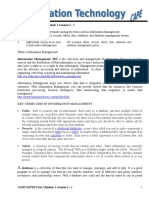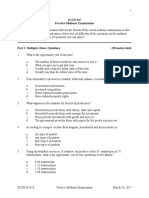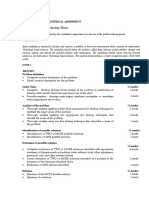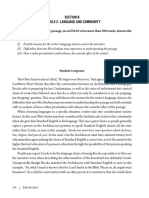0% found this document useful (0 votes)
172 views14 pagesInstructional Design Process Guide
The instructional design process involves systematically translating principles of learning and instruction into instructional materials and activities. It includes conducting a needs analysis, determining instructional goals and how they will be assessed, analyzing learners and the context, developing instructional strategies and assessments, and conducting formative and summative evaluations. The primary role of the instructional designer is to decide what students need to learn and effectively structure the learning environment to maximize individual student learning. The instructional design process is based on general systems theory, educational psychology, communication theory, and instructional theory.
Uploaded by
Aramisz Sarah NurCopyright
© © All Rights Reserved
We take content rights seriously. If you suspect this is your content, claim it here.
Available Formats
Download as PPT, PDF, TXT or read online on Scribd
0% found this document useful (0 votes)
172 views14 pagesInstructional Design Process Guide
The instructional design process involves systematically translating principles of learning and instruction into instructional materials and activities. It includes conducting a needs analysis, determining instructional goals and how they will be assessed, analyzing learners and the context, developing instructional strategies and assessments, and conducting formative and summative evaluations. The primary role of the instructional designer is to decide what students need to learn and effectively structure the learning environment to maximize individual student learning. The instructional design process is based on general systems theory, educational psychology, communication theory, and instructional theory.
Uploaded by
Aramisz Sarah NurCopyright
© © All Rights Reserved
We take content rights seriously. If you suspect this is your content, claim it here.
Available Formats
Download as PPT, PDF, TXT or read online on Scribd
/ 14

























































































